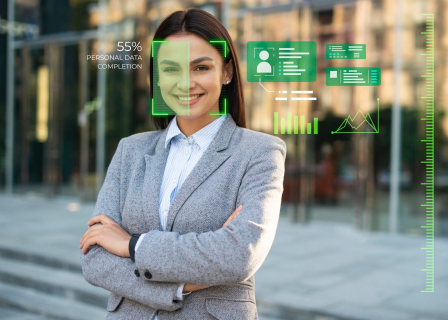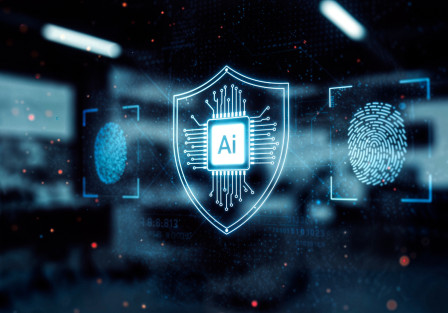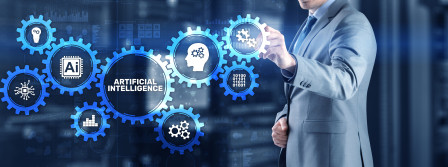AI tools are everywhere. But are people ready for them?
Many companies are investing in advanced AI systems, yet their teams remain unsure about how to use them effectively. That’s where the idea of an AI-ready culture comes in.
In 2025, AI adoption is accelerating faster than employee confidence. Surveys from CDO Trends and OECD show that while over half of organizations have implemented AI systems, most struggle with trust, literacy, and readiness to scale. Technology is available. The human readiness to work alongside it isn’t keeping pace.
This blog focuses on how leaders can align people, processes, and governance to create a workplace where AI is understood, trusted, and used responsibly, a foundation for lasting AI organizational transformation.
Understanding AI-Readiness: It Starts with Mindset
Being AI-ready is how people think about change. AI readiness is defined as an organization’s capacity to absorb, trust, and scale AI responsibly.
There are three levels of mindset that shape this journey:
- Fear-driven adoption – where AI is seen as a job threat.
- Efficiency-driven adoption – where AI is treated as a tool to optimize tasks.
- Value-driven adoption – where AI is seen as a collaborator that helps solve complex problems.
Research from Kyndryl and OECD emphasizes that the last mindset is where real productivity growth happens. Employees who view AI as a collaborator are more likely to innovate and share insights, creating a ripple of collective confidence across teams.
Leadership: The Cultural Catalyst
Leadership defines whether AI becomes a fear or a force.
The PwC-supported CDO Trends report shows that organizations with visible AI sponsors achieve nearly twice the success rate in project delivery compared to those where leadership stays silent.
Strong AI leadership is less about technical mastery and more about narrative clarity. Leaders in an AI-ready culture do three things well:
- Signal direction with transparency. They share openly how AI aligns with the company’s purpose.
- Frame AI as augmentation, not automation. This creates trust by focusing on empowerment.
- Measure learning velocity. They track how fast teams are gaining fluency, not just deployment rates.
Consider how Microsoft built its AI-driven leadership transformation. Instead of pushing technology top-down, it built internal AI champions who trained peers and reported lessons back to leadership. Similarly, DBS Bank created an AI-first culture through storytelling and mentorship, making AI an enabler of purpose, not pressure.
Building Organizational Trust in AI
Trust is the bridge between technology and adoption. Without it, even the most advanced systems will be underused.
Here’s how organizations can build that trust:
- Communicate clearly what data is used and why. Transparency replaces speculation.
- Involve employees in pilot testing. When people see results firsthand, skepticism turns into engagement.
- Celebrate AI-human success stories. Recognition of collaborative wins reinforces belief in responsible AI adoption.
A striking example comes from DBS Bank’s “Responsible AI Council.” Employees can flag ethical questions or unintended bias, and each issue gets reviewed publicly.
Upskilling the Workforce for AI Fluency
Across the Scale Zeitgeist and LinkedIn-referenced reports, companies that built AI labs and peer learning programs saw measurable improvements in productivity and retention.
The 2025 skill stack now includes:
- Data literacy for non-technical roles – understanding what data means, not just how it’s stored.
- Collaborative intelligence – working alongside AI systems effectively.
- Prompt and workflow design – crafting the right instructions and reviewing outcomes.
- Ethical interpretation – knowing when and how to question outputs.
The most successful organizations treat learning as a continuous process. CDO Trends calls this a learning flywheel: employees learn, apply, share, and refine together. Internal AI labs in marketing, operations, or customer support allow employees to see practical impact while developing confidence.
Embedding Responsible AI Governance
The NIST AI RMF and the EU AI Act (2024) emphasize that responsible governance isn’t about slowing AI down.
In an AI adoption strategy, governance shifts from being an IT checklist to shared accountability. Every department becomes responsible for asking: “Is this ethical? Is it explainable? Is it inclusive?”
Companies are using simple yet powerful tools to embed accountability:
- AI model cards that summarize purpose, limitations, and performance.
- Transparency reports that document data sources.
- Ethical review boards that include voices from multiple departments.
The embedding responsible AI in corporate culture starts here—through visible, repeatable actions. Governance becomes a shared rhythm rather than an external audit.
Measuring Cultural Maturity
How do you know your culture is AI-ready?
Capgemini’s 2024 assessment and OECD’s 2025 study point toward a simple structure: measure readiness across four pillars.
- Strategy Alignment: Are AI goals tied to business outcomes?
- Leadership Enablement: Do executives communicate clearly about AI priorities?
- Workforce Readiness: Are employees trained, confident, and supported?
- Ethical Confidence: Is fairness and explainability baked into processes?
This forms the basis of an internal AI-Culture Index.
Small wins make the difference—AI hackathons, storytelling sessions, or shared dashboards showing impact. These rituals keep curiosity alive and make AI change management measurable.
Conclusion
Building an AI-ready culture takes patience, trust, and shared purpose. The technology may evolve fast, but culture moves at the pace of people.
Success doesn’t come from more tools—it comes from alignment. From leaders who communicate clearly, teams that learn continuously, and systems built on transparency and accountability.
At TraceArt, we’ve seen that when culture and clarity lead, adoption follows. Because an organization that learns together stays ready for whatever AI brings next.














